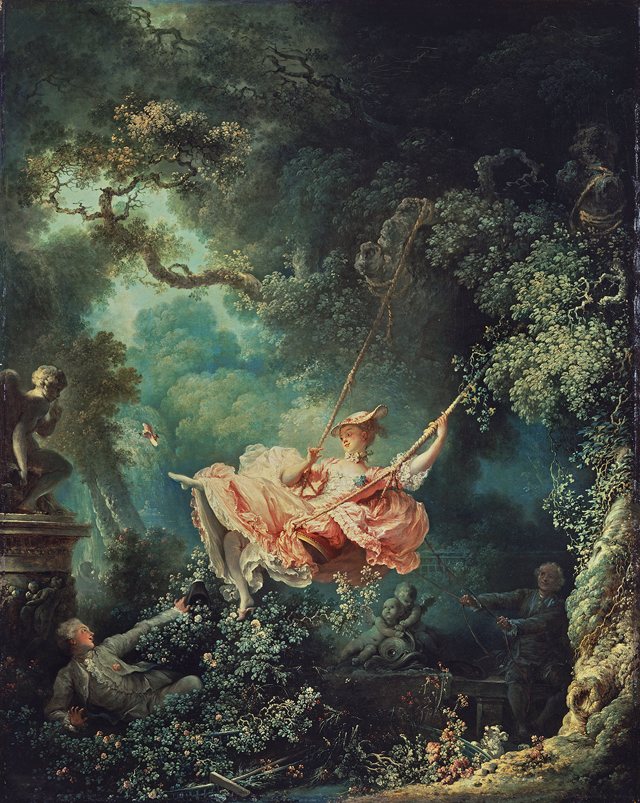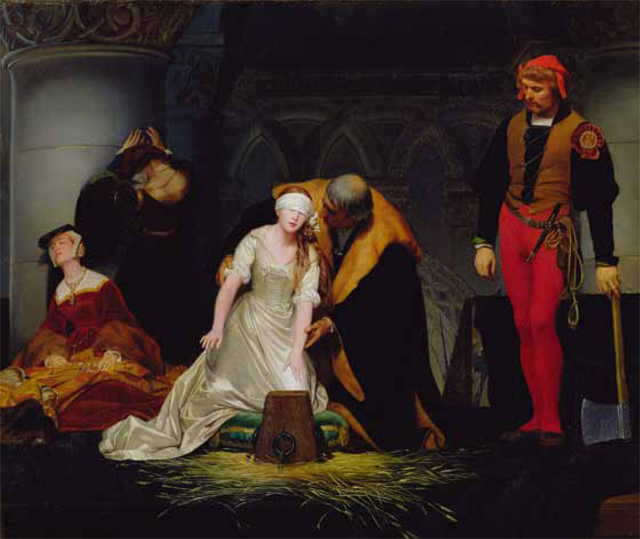My favourite painting: Stephen Jones
Stephen Jones chooses his favourite painting for Country Life.


The Swing, 1767, by Jean-Honoré Fragonard (1732–1806), 32in by 25in, The Wallace Collection, London
Stephen Jones says: ‘Why do I love The Swing? I think my love affair with French Rococo started as a teenager, when my mother took me to Waddesdon, the Rothschilds’ wonderful Rococo-filled manor house in Buckinghamshire. There, I discovered my love of the sinuous line and the asymmetric. I think I came upon this painting in my first year at Saint Martins, in 1976, and the sly joke of the fact that he’s looking directly up her skirt always amused me. But it was also the colouring, the whimsy, the handling of the paint on the leaves all these things I loved! I included it in Riverside, a TV programme I made in 1982 about my influences, so it’s been with me for a very long time. If the skies are grey, I look at The Swing and everything turns rosy ’
Stephen Jones is a British milliner, whose whimsical creations have crowned the heads of trendsetters from Diana, Princess of Wales, to Dita Von Teese.
John McEwen comments: This is Fragonard’s most famous painting. The 4th Marquess of Hertford bought it for his collection, which was bequeathed to the nation in 1897 by the widow of his illegitimate son, Sir Richard Wallace. There it remains on free permanent view, the Wallace trustees (unlike those of Glasgow’s Burrell and Philadelphia’s Barnes) honouring the conditions of the bequest, that nothing in the collection can be loaned.
The Swing epitomises the douceur de vivre and prettiness of the high 18th-century Rococo (Fr. rocaille, ‘rock garden’) style. It was commissioned by the baron de Saint-Julien. The baron is the shielded lover and his spotlit young mistress, tantalisingly beyond his reach, is the star of this erotic fantasy. The oblivious old man pulling the swing was originally meant to be a bishop, perhaps a jovial reference to the baron’s sinecure as Receiver General of the French Clergy. Fragonard prefers to show a layman, sometimes identified as the cuckolded husband.
Fragonard was born in Provençal Grasse, the son of a glovemaker, but the family soon moved to Paris, where he studied under Boucher and Chardin. He won the Prix de Rome and travelled throughout Italy. His eclecticism matched his virtuosity, which made him artistically much more than a master of Rococo, an ironic term coined in the 19th century.
He survived the Revolution by absenting himself in Grasse during the Terror and then through the protection of his younger friend Jacques-Louis David, art dictator of the Republic, but his identification with the Ancien Régime finished his career. It’s said he died after a stroll in the Champ de Mars eating an ice cream.
Sign up for the Country Life Newsletter
Exquisite houses, the beauty of Nature, and how to get the most from your life, straight to your inbox.
This article was originally published in Country Life, March 4, 2015

My Favourite Painting: Giles Deacon
Giles Deacon chooses his favourite painting for Country Life.
Country Life is unlike any other magazine: the only glossy weekly on the newsstand and the only magazine that has been guest-edited by HRH The King not once, but twice. It is a celebration of modern rural life and all its diverse joys and pleasures — that was first published in Queen Victoria's Diamond Jubilee year. Our eclectic mixture of witty and informative content — from the most up-to-date property news and commentary and a coveted glimpse inside some of the UK's best houses and gardens, to gardening, the arts and interior design, written by experts in their field — still cannot be found in print or online, anywhere else.
-
 Two quick and easy seasonal asparagus recipes to try this Easter Weekend
Two quick and easy seasonal asparagus recipes to try this Easter WeekendAsparagus has royal roots — it was once a favourite of Madame de Pompadour.
By Melanie Johnson
-
 Sip tea and laugh at your neighbours in this seaside Norfolk home with a watchtower
Sip tea and laugh at your neighbours in this seaside Norfolk home with a watchtowerOn Cliff Hill in Gorleston, one home is taller than all the others. It could be yours.
By James Fisher
-
 My favourite painting: Allan Mallinson
My favourite painting: Allan MallinsonMilitary historian Allan Mallinson picks an image of 'faith, generosity and ultimate sacrifice'.
By Charlotte Mullins
-
 My Favourite Painting: Piet Oudolf
My Favourite Painting: Piet Oudolf'One cannot sense whether he is far out on the ocean or closer to shore, or what he may be watching or feeling in that moment as he stares towards the beach.’
By Country Life
-
 My Favourite Painting: Mary Plazas
My Favourite Painting: Mary Plazas'There is compassion, awe, humility, a knowing yet a questioning in the glistening eyes. It moves me, it inspires me beyond the need to know.’
By Country Life
-
 My favourite painting: Robert Kime
My favourite painting: Robert KimeRobert Kime shares his fondness for New Year Snow by Ravilious
By Country Life
-
 My Favourite Painting: Anna Pavord
My Favourite Painting: Anna PavordAnna Pavord chooses a picture which reminds her of where she grew up
By Country Life
-
 My favourite painting: The Duchess of Wellington
My favourite painting: The Duchess of WellingtonThe Duchess of Wellington chooses her favourite painting for Country Life.
By Country Life
-
 My favourite painting: Maureen Lipman
My favourite painting: Maureen LipmanMaureen Lipman chooses her favourite painting for Country Life.
By Country Life
-
 My favourite painting: Jacqueline Wilson
My favourite painting: Jacqueline Wilson'I looked at this painting and decided to write about a Victorian circus girl one day'
By Country Life